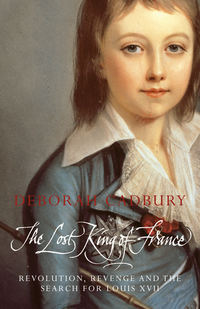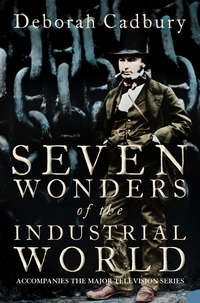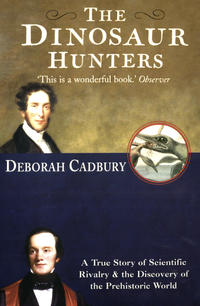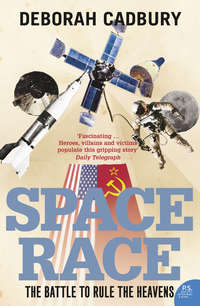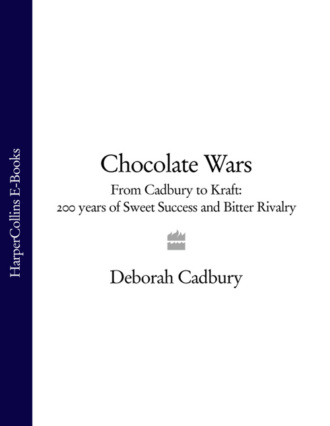
Полная версия
Chocolate Wars: From Cadbury to Kraft: 200 years of Sweet Success and Bitter Rivalry
Ahead was a battle in which defeat was all too possible. The brothers did not have to dedicate themselves to this struggling enterprise, with its cramped premises in which their offices were scarcely bigger than coffins. ‘It would have been far easier to start a new business, than to pull up a decayed one which had a bad name,’ George said later, looking back on his life. ‘The prospect seemed a hopeless one, but we were young and full of energy.’

George Cadbury in 1861, aged twenty-one, at the time that he took over the failing factory at Bridge Street.
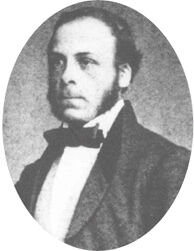
Richard Cadbury in 1861, aged twenty-six.
To the remaining employees of the company, who now had reason to fear for their jobs, ‘Mr Richard’ appeared jovial, relaxed and ‘always smiling’, while ‘Mr George’ was cut from a different cloth, ‘stern but very just’. His unremitting self-discipline and his ability to focus every aspect of his life on one goal became legendary. ‘He was not a man,’ a colleague later observed, ‘but a purpose.’ And what George and Richard decided to do next would become the stuff of family legend.

Richard and George Cadbury were the third generation of Cadbury tradesmen in Birmingham. It was their grandfather, Richard Tapper Cadbury, who had been instrumental in breaking centuries of long association with the West Country and leading the family in a new direction as shopkeepers in the town. At the close of the eighteenth century, as Napoleon prepared for his long march over Europe, the Cadburys, like countless others at the time, exemplified the Britain that the French leader dismissed as a mere ‘nation of shopkeepers’. And just as Napoleon’s scathing remark underestimated his enemy’s real wealth and capacity for war, so it was easy not to see the huge potential emerging from a new generation of shopkeepers whose connections were only just beginning to reach out across the world.
Like many Victorians, the young Richard Cadbury had a fascination with family history, and when travelling he took the opportunity to study ‘the records of his ancestors with thoroughness and affection’. Eventually he compiled a beautifully illustrated Family Book. This shows how his forebears lived as sheep farmers and wool combers in the West Country, their quiet lives marked for centuries by nothing more dramatic than the passing seasons, until 1782 when Richard and George’s grandfather, Richard Tapper Cadbury, set out to learn a trade.
‘Very little is known of his early life,’ writes Richard of his grandfather. ‘He left home in Exeter when he was fourteen on the top of the coach . . . to serve as an apprentice to a draper.’ The young Richard Tapper remembered the morning of his leaving: ‘My father and mother got up early to see me off by the stage . . . and I thought my heart would break.’
Richard Tapper was apprenticed to a draper 150 miles away in Kent who supplied uniforms to troops fighting in the American War of Independence. Within a year the war ended, the troops were demo-bilised and the business went bankrupt. Richard Tapper secured another position as an apprentice in Gloucester, where by the age of nineteen he was proud to receive wages of £20 a year. After ‘scrupulously and conscientiously’ avoiding any ‘unnecessary gratification’, he reassured his parents in Exeter, it was possible for him to pay for his own washing and ‘appear so respectable as to be invited as guest among the first families of Gloucester’. His next move was to London, to work for a linen draper and silk mercer in Gracechurch Street. His wages eventually rose to £40 a year, which not only enabled him to ‘maintain a respectable appearance’ but also to ‘purchase many books’.
After ten long years mastering the trade, Richard Tapper was longing to start a draper’s business of his own. He was dissuaded from his youthful dream of sailing for America by a family friend, who warned him ‘that the country is still far from settled’. Nor could he seek adventures in Europe, with France in the frenzied grip of Robespierre’s Reign of Terror and at war with its neighbours. So in 1794, equipped with much enthusiasm and, through the Quaker network, quite a few references, he took the stage to Birmingham with a friend, Joseph Rutter. They had heard of an opening for a linen draper and silk mercer in the town, and seized their chance.
The draper’s shop at 92 Bull Street was soon successful enough for Richard Tapper to buy out his partner and start a family. He married Elizabeth Head in 1796, and seven children followed over the next seven years. Elizabeth still found time to help in the shop, dressing the windows with fine silks and linens and taking an interest in the changing fashions. One year they were obliged to enlarge their front door to accommodate the fashion for puffed ‘gigot’ sleeves, strengthened with feather pads or whalebone hoops. Records show that Richard Tapper’s business was so successful that in 1816 a second shop at 85 Bull Street was also registered in his name.
The stories that survive in Richard Cadbury’s Family Book provide a vivid glimpse into his grandfather’s life. One of the problems Richard Tapper had to deal with was theft. After repeatedly losing silk that cost up to twelve shillings a yard, he felt he had to take action, but soon came to regret it. He stopped a woman in his shop who had two rolls of silk hidden under her cloak. When he went to court to hear the outcome of her trial, to his alarm the judge sentenced the woman to death. ‘I was appalled,’ Richard Tapper told his children years later, ‘for I never realised what the sentence would be. Without delay I posted to London, saw the Secretary of State and got the woman’s sentence commuted to transportation.’ Given that this was a time when it took almost two days by ‘Flying Coach’ – with fresh horses staged down the line – to reach London from Birmingham, this required considerable commitment.
As a Quaker, Richard Tapper became deeply involved in community affairs, and served on the Board of Street Commissioners for Birmingham, a precursor to the Town Council. He also worked as an Overseer of the Poor, including during the troubled year of 1800, when the harvest failed. According to the St James Chronicle, on 8 October the price of bread rose to nearly two shillings for one loaf. In the Parish of Birmingham the poor were in dread of starvation, ‘the distress in the town was great’, and there was ‘an alarming disorder’ in the workhouse. Richard Tapper was among those who tried to ensure that there was enough food.
Richard Tapper’s business prospered, and his garden at the back of 92 Bull Street became a favourite spot for his growing family, with ‘currants in abundance, flowers and a vine’. The accounts of Richard’s children are of particular personal interest since my own branch of the family can be traced to his oldest son, Benjamin, born in 1798. According to the Birmingham Daily Post, Benjamin had a passion for philanthropy. Among the many benevolent causes he supported were the local Infant Schools, the Bible Society and the Society for the Suppression of Cruelty to Animals. But like many Quakers, stated the Post, by far his ‘most laborious and anxious labours’ were devoted to the anti-slavery movement, ‘which more or less occupied his time and unwearied attention for upwards of thirty-five years’. When Benjamin turned thirty he inherited his father’s successful draper’s shop on Bull Street, and was happily settled there for many years.
Richard Tapper Cadbury’s second son, Joel, was able to fulfil his father’s own dream of seeking his fortune in America, and set sail in 1815 at the age of sixteen. The stormy Atlantic crossing took eighty days in high winds and rough seas that washed a man overboard and prompted seasoned sailors to say they had never seen such a sea. Joel eventually settled in Philadelphia, and became a cotton goods manufacturer. He had a family of eleven children, and established a large branch of Quakers on the east coast of America.
Richard’s third son, John – the father of Richard and George – born in 1801 above his father’s draper’s shop, was destined to have a very different fate. According to an account handed down through generations, John’s far-sighted father, having passed on his business to his oldest son, Benjamin, asked John to investigate the new colonial market in Mincing Lane, London. He was curious about a new commodity, the cocoa bean, which was arriving from the New World.
Today, among the gleaming black façades of City office blocks, there is little to give away Mincing Lane’s colourful past. The only hint of its nineteenth-century purpose survives in the name of a building halfway down the street: Plantation House. But when John Cadbury visited in the 1820s, it was a teeming market where colonial brokers met to trade in commodities from Britain’s growing empire. There were sale rooms where frenetic auctions were taking place for tea, sugar, coffee, jute, gums, waxes, vegetable oils, spices and cocoa. Prices and details of business were written on a blackboard, and samples of goods from warehouses in the docks along the nearby Thames were on display. They included the cocoa bean, or ‘nib’, from South America, which looked like a huge chocolate-coloured almond, still dusted with the dried pulp that surrounded it in the cocoa pod, and baked by the tropical sun.
At a time when cocoa was purchased primarily to produce a novelty drink for the rich, John’s mission was to ascertain whether there might be a future in this unpromising black bean.

John Cadbury, like his father before him, had set out to learn his trade at a young age as an apprentice. In 1816, aged fifteen and proudly dressed in the best-quality cloth from the family’s draper’s shop, he took the coach journey to Leeds, where he was apprenticed to a Quaker tea dealer. It appears he made a good impression. His aunt, Sarah Cash, who visited the following year, declared, ‘John is grown a fine youth, he possesses a fine open countenance, is vigorous of mind and body and desires to render himself useful.’ Others commented that the plain Quaker boy, soberly dressed in dark colours, stood out next to the rough Yorkshire boys. It seems the owners were soon content to leave the care of their tea business with John when they had to travel, and he was rewarded on his departure after seven years with a fine encyclopaedia.
John went to London to be apprenticed at the teahouse of Sanderson Fox and Company. While in London he went to see the warehouses of the East India Company, and watched the sale of commodities such as coffee and cocoa. He wrote to his father that he was convinced that there was potential in the exotic new bean, although he was not yet clear what that potential was.
In 1824 the twenty-three-year-old John returned to Birmingham and set up a tea and coffee shop of his own on Bull Street, next door to his brother Benjamin’s draper’s shop. His father lent him a small sum of money and said he must ‘sink or swim’, as there were no further funds. John proudly announced the opening of his shop in the local paper, Aris’s Birmingham Gazette, on 1 March. After setting out his considerable experience ‘examining the teas in the East India Company’s warehouses in London’, he drew the public’s attention to something new: a substance ‘affording a most nutritious beverage for breakfast . . . Cocoa Nibs prepared by himself’.
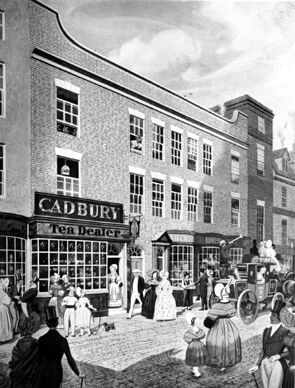
John Cadbury’s tea and cocoa shop in Bull Street, Birmingham, in 1824.
John Cadbury took advantage of the latest ideas to draw business to his shop, starting with the window. While most other shops had green-ribbed windows, John’s had innumerable small squares of plate glass, each set in a mahogany frame, which it was said he polished himself each morning. This alone was such a novelty that people would come to see it from miles around. On peering through the glass, prospective customers would be intrigued to see a touch of the Orient in the heart of smoky Birmingham. The many inviting varieties of tea, coffee and chocolate were displayed amongst handsome blue Chinese vases, Asian figurines and ornamental chests. Weaving his way through all this exotica was a Chinese worker in Oriental dress. Those who ventured inside were greeted by the rich aroma of coffee and chocolate; John ground the cocoa beans himself in the back of the shop with mortar and pestle. Word of John Cadbury’s quality teas and coffees soon spread amongst the wealthiest and best-known families in Birmingham: his customers included the Lloyds, Boultons, Watts, Galtons and others.
Meanwhile, through the Quaker network, John met Candia Barrow of Lancaster. The Barrows and the Cadburys had already developed very close ties through marriage. In 1823 John’s older sister Sarah had married Candia Barrow’s older brother. This was followed in 1829 by the marriage of John’s older brother Benjamin to Candia’s cousin, Candia Wadkin. So in June 1832, when John married Candia Barrow, it was the third marriage in a generation to link the two Quaker families. It proved to be a very happy union.
As John’s shop prospered, he could see for himself the growing demand for cocoa nibs. He took advantage of the large cellars under the shop to experiment with different recipes, and created several successful cocoa powder drinks. So confident was he of the future of this nutritious and wholesome drink that he decided to take a further step: into manufacturing.
In 1831, John rented a four-storey building in Crooked Lane, a winding back street at the bottom of Bull Street, and began to test produce cocoa on a larger scale. The idea of using machines to help process food was in its infancy, but to help him with the roasting and pressing of beans he installed a steam engine, which evidently was a great family novelty. According to his admiring aunt Sarah Cash, everyone in the family ‘had thoroughly seen John’s steam engine’. After ten years he had developed a wide variety of different types of cocoa for his shop: flakes, powders, cakes, and even the roasted and crushed nibs themselves.
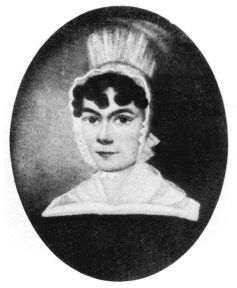
Candia at the time of her marriage to John Cadbury.
Meanwhile, Candia and John started a family, and moved to a house with a garden in the rural district of Edgbaston. Their first son, John, suffered intermittently from poor health. Richard Cadbury, their second child, was born on 29 August 1835, and was followed by a sister, Maria, and then George, born on 19 November 1839. The arrival of two more sons, Edward and Henry, would complete the family.
To the boys’ delight their parents placed a strong emphasis on the enjoyment of an outdoor life. Their house had a square lawn, recalled Maria. ‘Our father measured it round, 21 times for a mile, where we used to run, one after another, with our hoops before breakfast, seldom letting them drop before reaching the mile, and sometimes a mile and a half, which Richard generally did.’ Only then were they allowed in for breakfast, ‘basins of milk . . . with delicious cream on top and toast to dip in’. After this early-morning ritual, John set off to work. ‘I can picture his rosy countenance full of vigour,’ says Maria, ‘his Quaker dress very neat with its clean white cravat.’
A memorable delight for the boys was the arrival of the railway in Birmingham. Britain was in the grip of railway fever, and the Grand Junction Railway steamed into Birmingham from Manchester in 1837. Within a year, a line opened that covered the hundred miles between Birmingham and London. The treacherous two-day journey to the capital by horse and coach was reduced to a mere two hours by steam train. The coming of the railway made a deep impression on the growing family. ‘I got a railway train, first second and third class carriages, with an engine and tender,’ seven-year-old Richard wrote enthusiastically to his brother in 1842. For his father, however, it opened up whole new possibilities for trade.
At the age of eight, Richard was sent away to join his older brother John at boarding school. George studied with a local tutor who had a decidedly individualistic view on the best way to deal with boys. He aimed to instil mental and physical fortitude with a diet of classics and combative sports, including occasional games of ‘Attack’ which he devised himself, and which involved arming the boys with sticks. Somehow George came through the experience with a sound knowledge of French and Virgil, and a keen appreciation of home life. He remembered his childhood as ‘severe but happy’, with an emphasis on discipline and a lifestyle that was ‘bare of all self indulgence and luxury’.
Both George and Richard formed vivid impressions of trips to see their mother’s family at Lancaster. Their maternal grandfather, George Barrow, in addition to running a draper’s shop, had created a prosperous shipping business with trade to the West Indies. His grandchildren were allowed to climb the tower he had built in the grounds of his house, from where they had a stunning view of Morecambe Bay and on occasion his returning ships, sometimes banked up three at a time on the quayside beyond. Sea captains came to visit, and would regale the children with tales of wide seas and foreign lands, the wonders of travel and the horrors of the slave trade.
By 1847 John Cadbury’s Crooked Lane warehouse had been demolished to make way for the new Great Western Railway. Undeterred, John expanded his manufacturing into the Bridge Street premises, and was soon joined by his older brother Benjamin. By 1852 the two brothers were in a position to open an office in London, and they later received a royal accolade as cocoa manufacturers to Queen Victoria. It was around this time that they dreamed up a plan to create a model village for their workers, away from the grime of the city; they even designated one of their brands of cocoa ‘The Model Parish Cocoa’.
In 1850, when he was almost fifteen, Richard joined his father and uncle at Bridge Street, and was doubtless aware of their grand ambitions. With his father often away, he threw himself into the trade with ‘energy and devotion’, observed one relative. Richard kept his father informed of day-to-day events: ‘James is very steady at the engine, keeps it at a regular pace and in beautiful order and is careful not to waste any money over it. The girls do their work cheerfully, but want a good deal of looking after . . . ’
The pressures of learning the trade did not stop Richard indulging his love of sport. He and George were passionately fond of skating, and would often rise at 5 a.m. so as to be on the ice before dawn. ‘Only those who have made the effort know the exhilaration of skating in the early morning and watching the light gradually break and the beauty of the sunrise,’ wrote George. One young friend of his sister Maria remembered that Richard ‘used to fairly dazzle us with his skating’. But events were conspiring against such relaxed pursuits.
Cocoa sales had begun to decline during the economic depression of the ‘Hungry Forties’, when a slump in trade, rising unemployment, bad harvests and a potato blight in England and Scotland in 1845 combined to create widespread hardship. Many small businesses struggled, but for the Cadburys the irrevocable blow came in the early 1850s, when Candia was diagnosed with tuberculosis.
These painful years left their mark on Richard and George. They witnessed the inexorable decline first of their mother then of their father, then the neglect of the factory, as though it too was afflicted with a malady for which there was no known cure. John still occasionally walked through the factory in his starched white collar and neat black ribbon tied in a bow, but the enthusiasm that had prompted him to develop the venture over a period of thirty years was gone. He paid scant attention to the piles of cocoa beans accumulating in the stock room. The hard-won accolade as cocoa manufacturer to Queen Victoria no longer excited him. A year after Candia’s death he dissolved the partnership with his brother Benjamin. Gradually his absences became more prolonged as he searched for a cure for his arthritis, and the family firm began to lose its good name.

These were the pressing concerns in young George Cadbury’s mind when in 1857, like his father and grandfather before him, he too was sent away to learn his trade as an apprentice. His sister Maria had taken his mother’s place in the home looking after the younger children. His older brother Richard was taking on more responsibility for his father’s business. George was keen to master the trade by working in a grocery shop in York run by another Quaker, Joseph Rowntree.
Once past York’s famous city walls, the seventeen-year-old George Cadbury found himself in a maze of winding old streets, with irregular gabled houses, the overhang of their upper storeys making the streets narrow and dark. At the bottom of the Shambles, the road opened onto a busy thoroughfare called Pavement. Almost directly opposite, at number 28, stood Rowntree’s shop, a handsome eighteenth-century terraced house, tall and narrow, its walls made crooked by subsidence. There was little in the colourful thoroughfare outside to hint at the austerity and long hours that awaited George inside the shop.
The strict rules of conduct that Joseph Rowntree expected his numerous apprentices to obey were clearly set out in a Memorandum:
The object of the Pavement establishment is business. The young men who enter it as journey men or apprentices are expected to contribute . . . in making it successful . . . It affords . . . a full opportunity for any painstaking, intelligent young man to obtain a good practical acquaintance with the tea and grocery trades . . . The place is not suitable for the indolent and the wayward . . .
The Memorandum specified every detail of the boys’ lives: no more than twenty minutes for a meal break, only one trip home a year, and the exact hours at which they were to return each night: in June and July they were allowed to walk outside in the evenings until ten o’clock; during all other months the curfew was earlier.
Living at the house were Joseph Rowntree’s sons, including twenty-one-year-old Joseph and nineteen-year-old Henry Isaac. Joseph was tall and dark with intense features, the natural severity of his own character complemented by years of Quakerly upbringing. His father had taken him to Ireland on a Quaker Relief Mission in 1850 during the potato famine, and the experience had left a lasting impression on him: Joseph remembered how slow starvation turned the young and comely into walking corpses. Numberless unknown dead lay in open trenches or where they had fallen by the side of the road. For the serious-minded Joseph it had been a shocking lesson in the effects of poverty. His younger brother Henry provided a contrast to Joseph’s austerity. Somehow the full Puritan weight of Quaker training did not sit quite so readily on him; he had a sense of fun, and could be relied upon to lighten the mood.
While working in Rowntree’s grocery shop, George saw at first hand how the family’s cocoa business came into existence. Joseph senior had for many years been close friends with a local businessman, Samuel Tuke, who ran a cocoa factory and shop at Castlegate, not far from the Rowntrees’ Pavement shop. The business had been in the family for three generations, but when Samuel Tuke became ill in 1857, his sons did not want to take on the cocoa factory. The elder Joseph Rowntree offered to help his friend by placing one of his own sons in the business. As Rowntree’s eldest sons were due to take a stake in his grocer’s shop, the opportunity to work for the Tukes fell to his third son, Henry Rowntree. In 1860, Henry duly set out to Castlegate to embark on his own career in cocoa.




